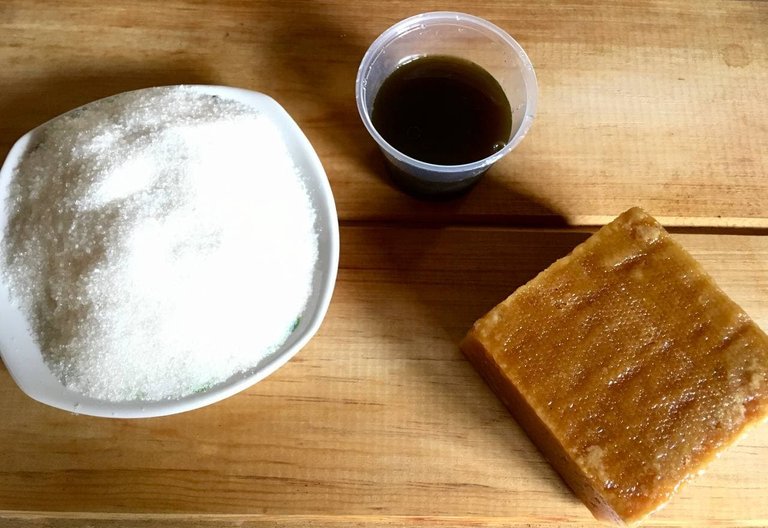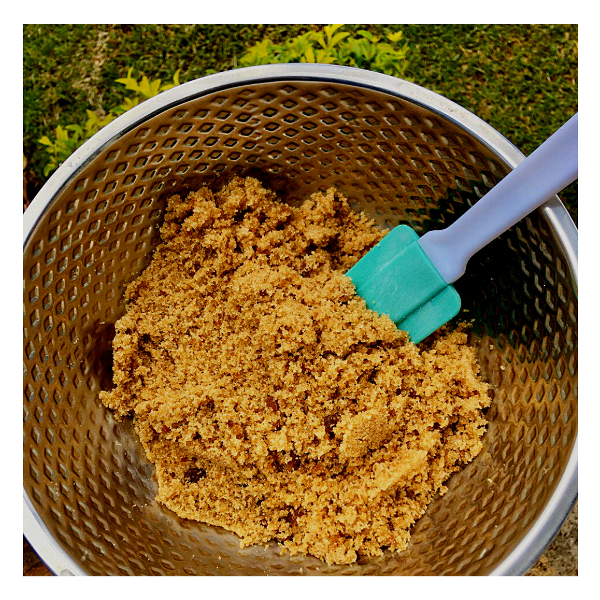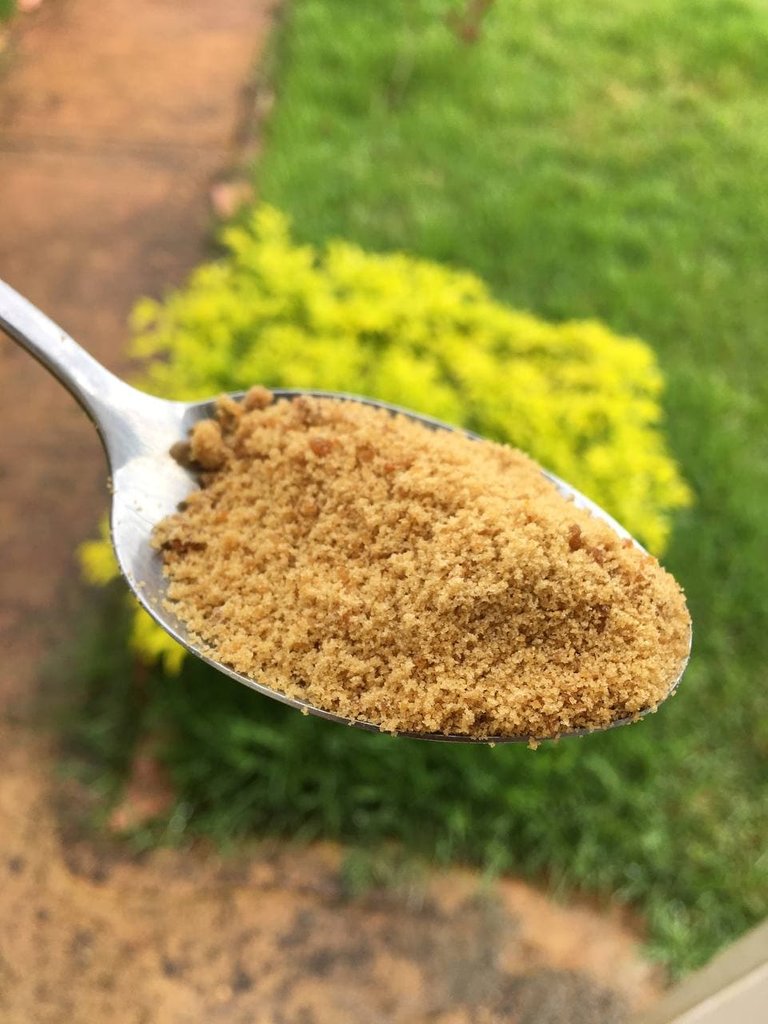Hi Hivers!
Many times we want to prepare desserts and drinks whose preparation requires the use of brown sugar, we go to the pantry and found that we are out of stock of this particular ingredient; and after the global isolation due to COVID-19 we have had to limit our visits to the supermarket, so we must use our imagination to prepare recipes without its main ingredients.
In the following post, I will show you how to prepare your own brown sugar at home, and you will also learn about the nutritional differences between traditional white sugar and brown sugar.
Ingredients:
- 2 cups of white sugar (A gluten free sugar is an excellent choice).
- 1 small spoonful of molasses (You can substitute it with panela).

Preparation:
Place the granulated sugar in a bowl, add molasses and whisk until completely blended.

When you get a moist and brownish texture, your brown sugar is ready to use it into your recipes.

How to store your brown sugar?
Pour the sugar into a glass container, store in a dry place, away from light and at room temperature.
It may harden over time as it loses moisture. So if you need to soften brown sugar quickly, put a piece in a microwave-safe bowl. Dampen a paper towel with water and place it over the brown sugar. Microwave it for 15 to 20 seconds and check to see if it is softened. If not, heat it for another 15 to 20 seconds.
You can also soften it by storing it with a piece of fresh bread for a few days. The moisture in the bread will soften the sugar. Just be sure to remove the bread before too much time has passed, otherwise it will dry out.
Learning a little more about refined sugar and its variants:
No matter what type it is, sugar composed of a substance called sucrose. The extraction of Sucrose is from two sources: sugar beets (From temperate climates) or sugar cane (From hot climates).
The essential difference between the commercial brown sugar and white sugars lies in the amount of sucrose they contain. Commercial brown sugar has an average purity of 85% and white sugar 95%, which means that the higher the percentage, the more refining and chemical exposure the sugar has undergone.
How is sugar produced?
The sugar cane or sugar beet goes through several chemical processes until to find a final solution, which is basically water with sucrose. The water evaporates, and at this point the sucrose begins to form crystals (sugar). There is a small part of sucrose that, due to its water content and impurities, does not crystallize but caramelizes until it becomes bitter and acquires a brownish color, thus producing molasses, which is used to color brown sugar.
About vitamins, minerals and caloric intake.
Both white sugar and brown sugar provide 4 kcal per gram. These calories are “empty calories” because they provide energy, but have no nutritional value.
However, the amount of minerals or vitamins found in brown sugar thanks to molasses is so low that, in order to reach a significant level in the body, much more sugar than recommended would have to be consumed, thus generating excessive consumption of “free sugar”.
Contrary to what many might think, the brown version of this natural sweetener has this shade because the molasses are removing from the raw sugar crystals during purification. The result is a larger grain with less sweetening power.
Additional information:
You can place 1 or 2 apple slices in the container to keep the brown sugar soft.
If the brown sugar is too hard, and you can't remove a piece to put in a bowl, add a few teaspoons of water to the sugar before heating it in the microwave.
Because they come from a natural source (sugar cane), it is common to think that they are a healthy food. However, the World Health Organization (WHO) recommends: “Consumption of sugars should represent less than 10% of the total daily caloric intake and if in addition the total daily caloric intake is less than 5% additional benefits will be obtained”.
So whether the sugar you consume is blonde, brown, Demerara, etc; you should take a conscious and appropriate use of these products in your food and beverages.

Congratulations @aluskab888! You have completed the following achievement on the Hive blockchain and have been rewarded with new badge(s) :
Your next target is to reach 50 posts.
Your next target is to reach 1000 upvotes.
You can view your badges on your board and compare yourself to others in the Ranking
If you no longer want to receive notifications, reply to this comment with the word
STOPTo support your work, I also upvoted your post!
Check out the last post from @hivebuzz:
Support the HiveBuzz project. Vote for our proposal!